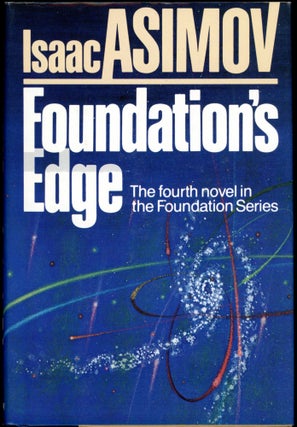Results
ISSAC ASIMOV'S TOMORROW'S VOICES. Collected by the Editors of Isaac Asimov's Science Fiction Magazine.
New York: The Dial Press / Davis Publications, Inc., [1984]. Octavo, boards. First edition. Original anthology collecting fifteen stories by Jayge Carr, David Brin, Mary R. Gentle and others, and a poem by Bruce Boston.
THE HUGO WINNERS: VOLUME 4 [1976-1979].
Garden City: Doubleday & Company, Inc., 1985. Octavo, cloth backed boards. First edition. Collect thirteen stories. Roger Zelazny, Larry Niven, Fritz Leiber, James Tiptree, Jr., Isaac Asimov, Joe Haldeman, Spider and Jean Robinson, Joan D. Vinge, Harlan Ellison, John Varley, Poul Anderson and C.J. Cherryh.
THE HUGO WINNERS: VOLUME 4 [1976-1979].
Garden City: Doubleday & Company, Inc., 1985. Octavo, cloth backed boards. First edition. Collect thirteen stories. Roger Zelazny, Larry Niven, Fritz Leiber, James Tiptree, Jr., Isaac Asimov, Joe Haldeman, Spider and Jean Robinson, Joan D. Vinge, Harlan Ellison, John Varley, Poul Anderson and C.J. Cherryh.
FOUR FUTURES: FOUR ORIGINAL NOVELLAS OF SCIENCE FICTION.
New York: Hawthorn Books, Inc., [1971]. Octavo, cloth. First edition. Anthology of four stories based on themes suggested by Isaac Asimov.
NORBY AND THE LOST PRINCESS.
New York: Walker and Company, [1985]. Octavo, boards. First edition. The third Norby book.
CHILD OF TIME.
London: Victor Gollancz Ltd, 1991. Octavo, boards. First edition.
THE [complete] LUCKY STARR SERIES: DAVID STARR: SPACE RANGER, LUCKY STARR AND THE PIRATES OF THE ASTEROIDS, LUCKY STARR AND THE OCEANS OF VENUS, LUCKY STARR AND THE BIG SUN OF MERCURY, LUCKY STARR AND THE MOONS OF JUPITER, LUCKY STARR AND THE RINGS OF SATURN. (6 volumes).
Boston: Twayne Publishers [Gregg Press], [1978]. Octavo, cloth. Later editions. First editions by this publisher. First published by Doubleday as by "Paul French," ( pseudonym). The complete Lucky Starr series. New preface by Isaac Asimov.
ISAAC ASIMOV: A CHECKLIST OF WORKS PUBLISHED IN THE UNITED STATES, MARCH 1939-MAY 1972.
[Kent]: The Kent State University Press, [1972]. Octavo, cloth. First edition. Lists fiction and nonfiction by Asimov published in books and magazines, plus selected secondary material on Asimov and his writings. Brief introductory note by Asimov. Burgess, Reference Guide to Science Fiction, Fantasy, and Horror 273.
THE SCIENCE FICTION WEIGHT-LOSS BOOK.
New York: Crown Publishers, Inc., [1983]. Octavo, cloth-backed boards. First edition. Collects fifteen stories by R. A. Lafferty, Robert Silverberg, Jack Vance, William Tenn, Kit Reed, Stephen King, and others. Includes "Gladys's Gregory" by John Anthony West and other dystopian tales.
100 GREAT FANTASY SHORT SHORT STORIES.
New York: Doubleday & Company, Inc., 1978. Octavo, cloth backed boards. First edition. One hundred very short stories, most 2-5 pages, longest 6 pages. Isaac Asimov, Roger Zelazny, Jane Yolen, Clark Ashton Smith, Avram Davidson, H.P. Lovecraft, James Sallis, Katherine Maclean, and many others.
THE ALTERNATE ASIMOVS.
Garden City: Doublday & Company, Inc., 1986. Octavo, cloth. First edition. Signed by Asimov on the title page. Collects "Grow Old Along With Me," the original novella-length version of novel Pebble in the Sky, the original novelette-length version of novel The End of Eternity, and the previously unpublished first version and published version of "Belief," with introduction and afterword by Asimov.
ASIMOV'S MYSTERIES.
Garden City, New York: Doubleday & Company, Inc., 1968. Octavo, cloth. First edition. Collects 13 science fiction mystery stories.
ASIMOV'S SHERLOCKIAN LIMERICKS.
New York: The Mysterious Press, 1978. Small octavo, illustrated by Gahan Wilson, cloth. First edition. One of 250 numbered copies signed by Asimov and the artist, Gahan Wilson. Sixty limericks, one for each of the sixty tales of the Sherlockian canon.
THE BEST OF ISAAC ASIMOV.
Garden City: Doublday & Company, Inc., 1974. Octavo, cloth. First U.S. edition. Generic inscription and signed by Asimov on the title page. Collects twelve stories selected by the author from 1939-1972. Introduction by Asimov. Preceded by the British edition published in 1973.
THE CAVES OF STEEL.
Garden City, New York: Doubleday & Company, Inc., 1954. Octavo, jacket illustration by Ruth Ray, boards. First edition. The first of the Robot novels. "A richly characterized, thoughtfully told story; justifiably a favorite among Asimov's readers." Anatomy of Wonder (1995) 3-10. Hubin, p. 34. Sargent, British and American Utopian Literature, 1516-1985, p. 245.
THE COMPLETE STORIES: VOLUME I.
[London]: HarperCollinsPublishers, [1993]. Octavo, boards. First British edition. Collects forty-six stories and two poems, all fiction previously collected in EARTH IS ROOM ENOUGH (1957) NINE TOMORROWS (1959) and NIGHTFALL AND OTHER STORIES (1969). Anatomy of Wonder (2004) II-43.
THE CURRENTS OF SPACE.
Garden City, New York: Doubleday & Company, Inc., 1952. Octavo, jacket illustration by George Guisti, boards. First edition. "... an effective standalone blend of mystery and adventure on a world where unspecified disaster has been foretold by a highly specialist expert now lost to amnesia." - John Clute / Malcolm J. Edwards, SFE (online). "Minor early Asimov set against the interstellar background of the Trantorian Empire (about to become the galactic empire of the 'Foundation' series). A complex adventure with an anti-racist theme." - Pringle, The Ultimate Guide to Science Fiction, second edition (1995), p. 83.
THE CURRENTS OF SPACE.
Garden City, New York: Doubleday & Company, Inc., 1952. Octavo, jacket illustration by George Guisti, boards. First edition. "... an effective standalone blend of mystery and adventure on a world where unspecified disaster has been foretold by a highly specialist expert now lost to amnesia." - John Clute / Malcolm J. Edwards, SFE (online). "Minor early Asimov set against the interstellar background of the Trantorian Empire (about to become the galactic empire of the 'Foundation' series). A complex adventure with an anti-racist theme." - Pringle, The Ultimate Guide to Science Fiction, second edition (1995), p. 83.
THE EARLY ASIMOV OR, ELEVEN YEARS OF TRYING.
Garden City, NY: Doublday & Company, Inc., 1972. Octavo, cloth. First edition. Ross. Long time fan, professional editor, researcher and recipient of the First Fandom Hall of Fame (2016). Signed by Asimov to Joe Wrzos on the title half title page. Joseph Wrzos (1929-2023) was a long time fan, professional editor, researcher and recipient of the First Fandom Hall of Fame (2016). Collects twenty-seven stories (1939-1949) with autobiographical commentary by Asimov. Anatomy of Wonder (2004) II-45.
THE END OF ETERNITY.
Garden City, New York: Doubleday & Company, Inc, 1955. Octavo, illustrated by Mel Hunter, cloth. First edition. Eternals police human history against disasters, making history safe for mankind. "Time guardians rove through the centuries, keeping all eras in harmony. The hero rebels, preferring the uncertainties of infinity to the carefully controlled boredom of Eternity." - Pringle, The Ultimate Guide to Science Fiction, second edition (1995), p. 120. "... a complex, thoughtful story of time travel, time paradoxes and time police, considered by some critics to be his best work." - John Clute / Malcolm J. Edwards, SFE (online). "Perhaps Asimov's best early novel..." Barron (ed.): Anatomy of Wonder (1987) 3-18.
THE END OF ETERNITY.
Garden City, New York: Doubleday & Company, Inc, 1955. Octavo, jacket illustration by Mel Hunter, cloth. First edition. Eternals police human history against disasters, making history safe for mankind. "Time guardians rove through the centuries, keeping all eras in harmony. The hero rebels, preferring the uncertainties of infinity to the carefully controlled boredom of Eternity." - Pringle, The Ultimate Guide to Science Fiction, second edition (1995), p. 120. "... a complex, thoughtful story of time travel, time paradoxes and time police, considered by some critics to be his best work." - John Clute / Malcolm J. Edwards, SFE (online). "Perhaps Asimov's best early novel..." Barron (ed.): Anatomy of Wonder (1987) 3-18.
FANTASTIC VOYAGE.
Boston: Houghton Mifflin Company, 1966. Octavo, cloth. First edition. Nebula nominee for 1966. Filmed in 1966 by Richard Fleischer with Stephen Boyd, Raquel Welch, and Donald Pleasance. This is a novelization of the screenplay. Anatomy of Wonder (1981) 3-43.
FOUNDATION AND EARTH.
Garden City: Doubleday & Company, Inc., 1986. Octavo, cloth-backed boards. First edition. "The space travelers from FOUNDATION'S EDGE journey from the sentient world of Gaia to Earth via various ancient planets familiar to readers of Asimov's "Robot" stories. More bloated, talky stuff for readers who are well steeped in the author's earlier works." - Pringle, The Ultimate Guide to Science Fiction, second edition (1995), p. 143. Includes a continuation of the eutopia in FOUNDATION'S EDGE and some dystopia.
(Foundation Trilogy): FOUNDATION [with] FOUNDATION AND EMPIRE [with] SECOND FOUNDATION.
New York: Gnome Press Publishers, later Gnome Press, Inc., [1951-1953]. Octavo, three volumes, first volume bound in cloth, others in boards. First editions, first printings. All volumes signed or inscribed by Asimov. The first three volumes of the Foundation series. Soon to released on the streaming service Apple TV as a series. Awarded a special Hugo in 1966 for best all-time series. Anatomy of Wonder (2004) II-46. Survey of Science Fiction Literature II, pp. 819-31.
FOUNDATION'S EDGE.
Garden City, NY: Doubleday & Company, Inc., 1982. Octavo, boards. First edition, first printing with code "M36" on page 365. Fourth novel in the Foundation series. "A belated sequel to the 'Foundation Trilogy,' marking Asimov's return to his distinctive brand of cerebral space opera after more than twenty years. In this yarn (and the related novels THE ROBOTS OF DAWN, ROBOTS AND EMPIRE, FOUNDATION AND EARTH and PRELUDE TO FOUNDATION) Asimov explains the galactic history of THE STARS LIKE DUST and the "Foundation" series as a plot by the robots (from the otherwise unconnected 'Robot' stories) to ensure the survival and happiness of the human race, and hints that the history-altering time travelers of THE END OF ETERNITY set up the whole thing." - Pringle, The Ultimate Guide to Science Fiction, second edition (1995), p. 143. Winner of the 1983 Hugo award. 1982 Nebula nominee. Anatomy of Wonder (2004) II-47. Sargent, British and American Literature, 1516-1985, p. 410.

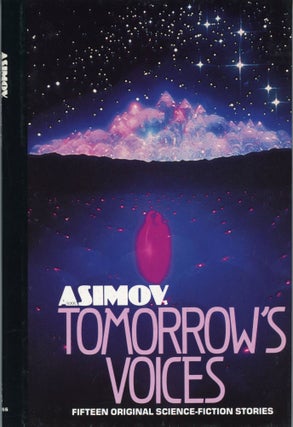
![Item #3901 THE HUGO WINNERS: VOLUME 4 [1976-1979]. Isaac Asimov](https://jwkbooks.cdn.bibliopolis.com/pictures/3901.jpg?width=320&height=427&fit=bounds&auto=webp&v=1483726364)
![Item #19722 THE HUGO WINNERS: VOLUME 4 [1976-1979]. Isaac Asimov](https://jwkbooks.cdn.bibliopolis.com/pictures/19722.jpg?width=320&height=427&fit=bounds&auto=webp&v=1469824774)
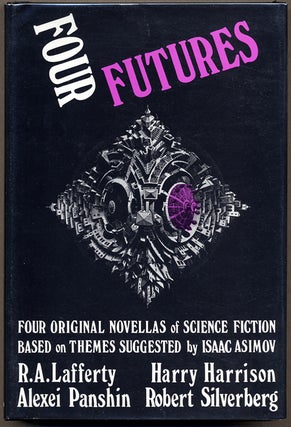
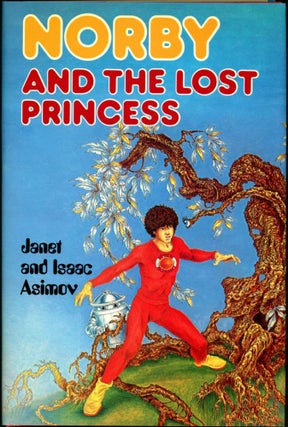
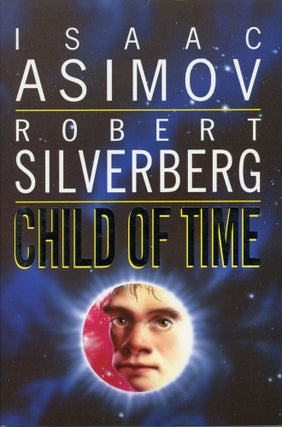
![Item #28014 THE [complete] LUCKY STARR SERIES: DAVID STARR: SPACE RANGER, LUCKY STARR AND THE...](https://jwkbooks.cdn.bibliopolis.com/pictures/28014.jpg?width=320&height=427&fit=bounds&auto=webp&v=1636929565)
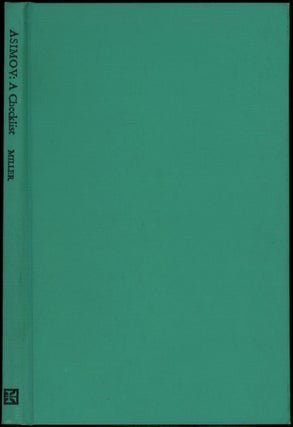
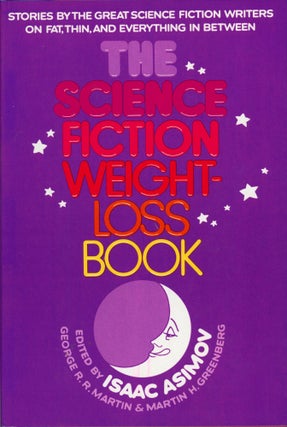
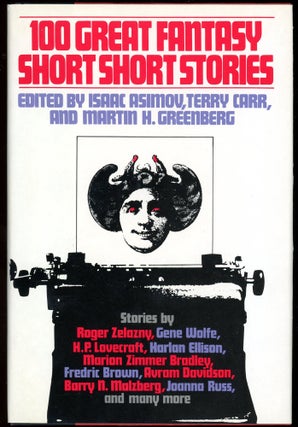

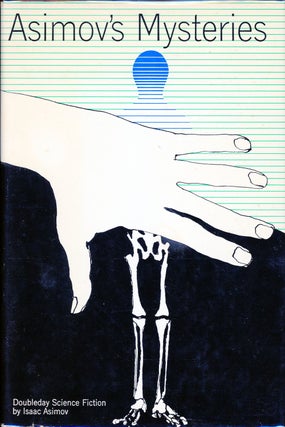
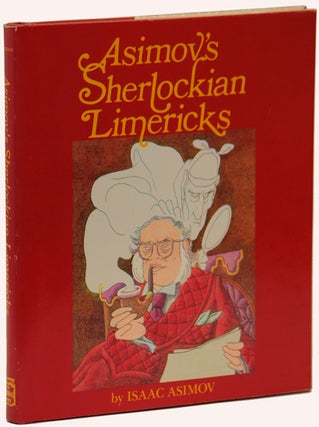
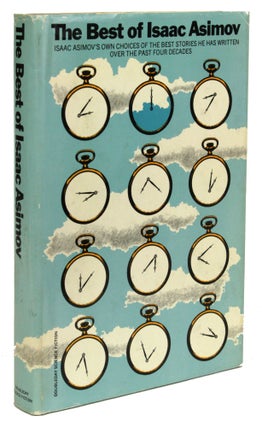
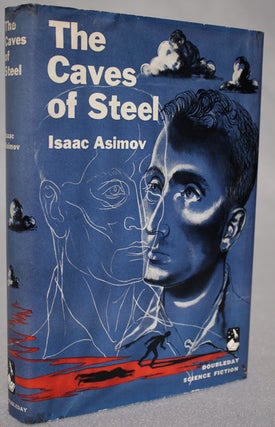
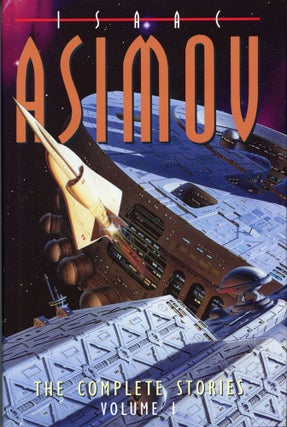
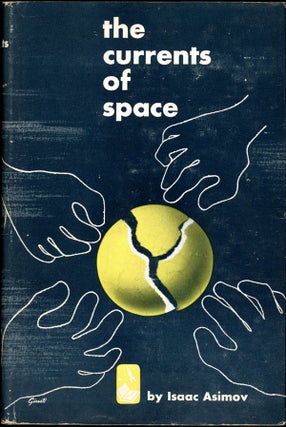
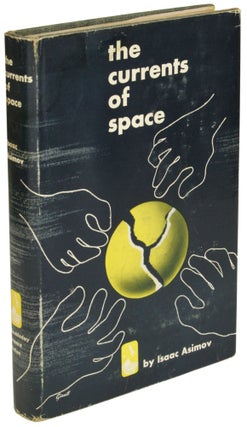
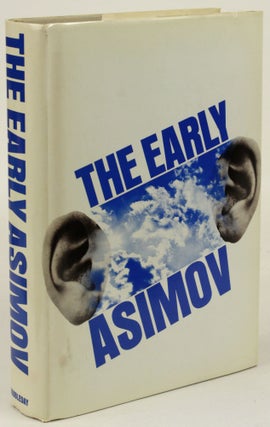
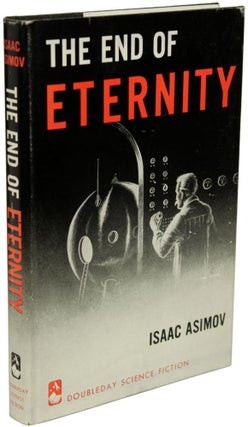
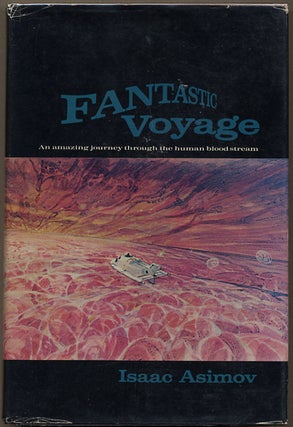
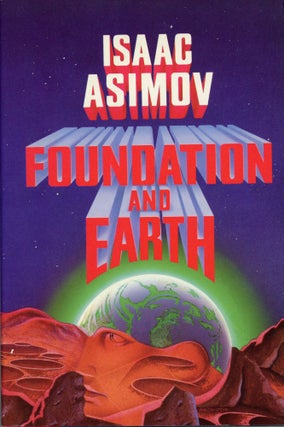
![Item #26664 (Foundation Trilogy): FOUNDATION [with] FOUNDATION AND EMPIRE [with] SECOND...](https://jwkbooks.cdn.bibliopolis.com/pictures/26664_1.jpg?width=320&height=427&fit=bounds&auto=webp&v=1670016875)
